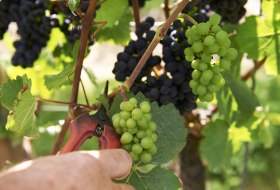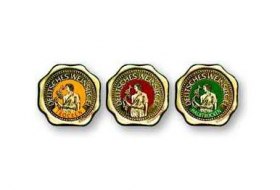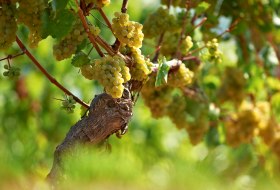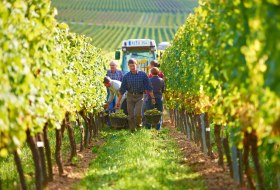
searchMenu



The "green harvest" or "thinning out" describes the premature cutting out of grapes in order to reduce the crop about six weeks before the actual harvest. The grapes, which are not yet ripe, are dropped on the ground. This increases the quality of the must obtained from the remaining grapes.

National Museum in Oppenheim, supported by the foundation "Förderverein des Deutschen Weinbaumusums Oppenheim eV", founded in 1978. 5000 sqm of exhibition space. It shows the history and technical development of German viticulture, including the wine-growing industry (viticulture and winemaking) from Roman times to the present day (the only German museum of its kind) as well as wine-cultural exhibits. Annual special exhibitions and »open house«. Link to the German Wine Museum

This quality label for fine wines is awarded by the German Agricultural Society (DLG). The German wine seal has the colours red / black for sweet wines, green / black for off-dry wines and yellow / black for dry wines.

The grape variety is one of the factors that influence the quality and taste of a wine. The grape variety may be indicated on the label, however, that is not mandatory. Link to the description of the individual grape varieties

In September and October the grapes are harvested. Nowadays, much of the work is done by the grape harvesters. Among others, Beerenauslese, Trockenbeerenauslese, and Selection Rheinhessen wines are still harvested by hand.

Natural non-alcoholic fruit juice preserved by certain processes (unfermented grape must). It is intended for direct consumption, not for wine production and must be labeled as grape juice. Vintage or grape variety information is permitted. Increasing demand is causing a higher production. While a few years ago, there was no demand for grape juice, this has changed and led to many Rheinhessen winemakers also offering grape juice. Grape juice is nutritious, healthy (cure) and mixed with water refreshing, which makes it the perfect drink for…